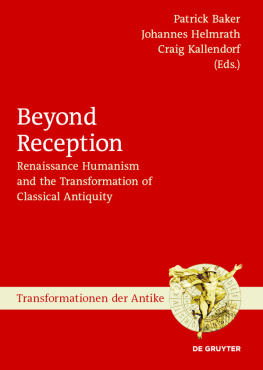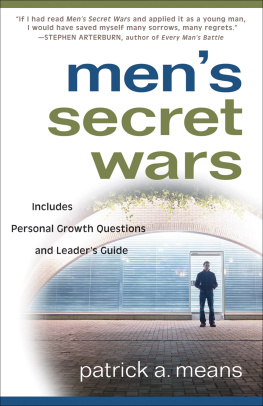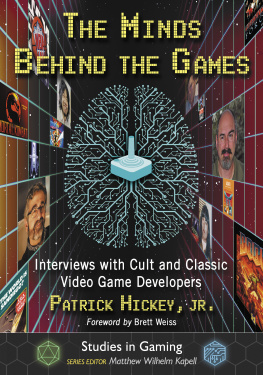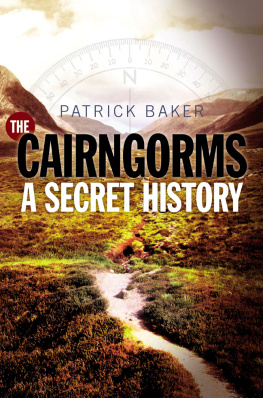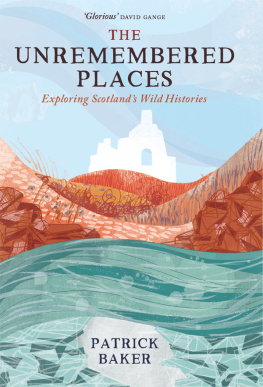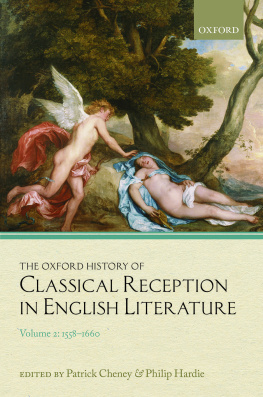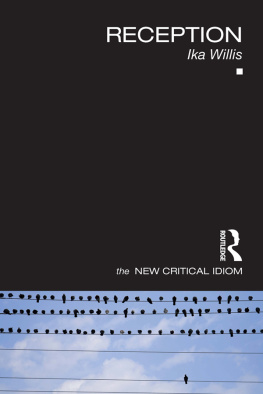Baker Patrick. - Beyond Reception
Here you can read online Baker Patrick. - Beyond Reception full text of the book (entire story) in english for free. Download pdf and epub, get meaning, cover and reviews about this ebook. year: 2019, publisher: De Gruyter, genre: Religion. Description of the work, (preface) as well as reviews are available. Best literature library LitArk.com created for fans of good reading and offers a wide selection of genres:
Romance novel
Science fiction
Adventure
Detective
Science
History
Home and family
Prose
Art
Politics
Computer
Non-fiction
Religion
Business
Children
Humor
Choose a favorite category and find really read worthwhile books. Enjoy immersion in the world of imagination, feel the emotions of the characters or learn something new for yourself, make an fascinating discovery.
- Book:Beyond Reception
- Author:
- Publisher:De Gruyter
- Genre:
- Year:2019
- Rating:4 / 5
- Favourites:Add to favourites
- Your mark:
- 80
- 1
- 2
- 3
- 4
- 5
Beyond Reception: summary, description and annotation
We offer to read an annotation, description, summary or preface (depends on what the author of the book "Beyond Reception" wrote himself). If you haven't found the necessary information about the book — write in the comments, we will try to find it.
Beyond Reception — read online for free the complete book (whole text) full work
Below is the text of the book, divided by pages. System saving the place of the last page read, allows you to conveniently read the book "Beyond Reception" online for free, without having to search again every time where you left off. Put a bookmark, and you can go to the page where you finished reading at any time.
Font size:
Interval:
Bookmark:

Beyond Reception
Transformationen der Antike

Herausgegeben von
Hartmut Bhme, Horst Bredekamp, Johannes Helmrath,Christoph Markschies, Ernst Osterkamp, Dominik Perler,Ulrich Schmitzer
Wissenschaftlicher Beirat:
Frank Fehrenbach, Niklaus Largier, Martin Mulsow,Wolfgang Pro, Ernst A. Schmidt, Jrgen Paul Schwindt
Band 62
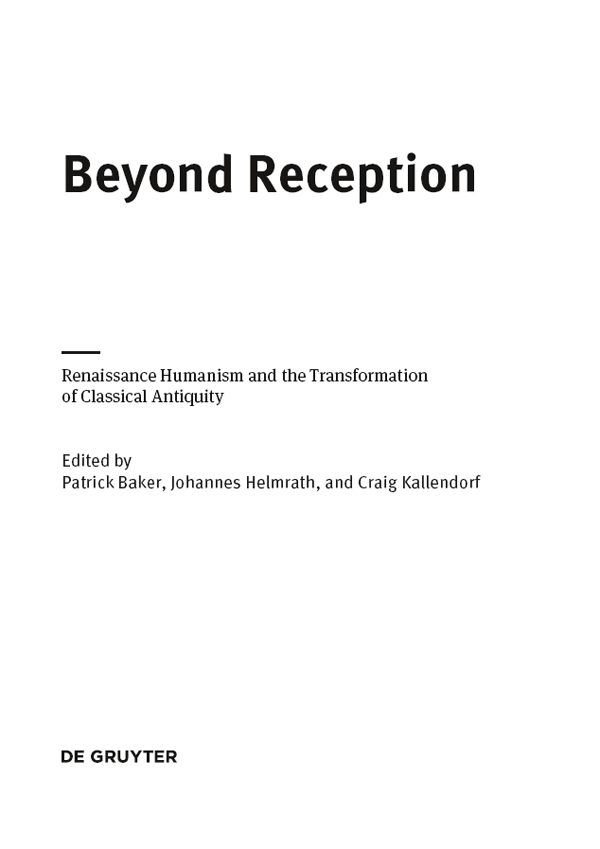
The publication of this volume was made possible through the support of the Deutsche Forschungsgemeinschaft,using funds provided to Collaborative Research Center 644 Transformations of Antiquity.
ISBN 978-3-11-063577-5
e-ISBN (PDF) 978-3-11-063877-6
e-ISBN (EPUB) 978-3-11-064816-4
ISSN 1864-5208
Library of Congress Control Number: 2018967608
Bibliographic information published by the Deutsche Nationalbibliothek
The Deutsche Nationalbibliothek lists this publication in the Deutsche Nationalbibliografie; detailed bibliographic data are available on the Internet at http://dnb.dnb.de.
2019 Walter de Gruyter GmbH, Berlin/Boston
Logo Transformationen der Antike: Karsten Asshauer SEQUENZ
Cover design: Martin Zech, Bremen
www.degruyter.com
Patrick Baker, Johannes Helmrath and Craig Kallendorf
Now there was a man of the Pharisees named Nicodemus, a ruler of the Jews. This man came to Jesus by night and said to him, Rabbi, we know that you are a teacher come from God, for no one can do these signs that you do unless God is with him. Jesus answered him, Truly, truly, I say to you, unless one is born again he cannot see the kingdom of God. Nicodemus said to him, How can a man be born when he is old? Can he enter a second time into his mother's womb and be born? Jesus answered, Truly, truly, I say to you, unless one is born of water and the Spirit, he cannot enter the kingdom of God. That which is born of the flesh is flesh, and that which is born of the Spirit is spirit. Do not marvel that I said to you, You must be born again.
(John 3:17, English Standard Version; emphasis added)
To be born again this is the metaphor on which the Renaissance rests, enshrined in the period label that Petrarch and his descendants chose for themselves, as Mommsen and Ullman showed years ago.
Much of the cultural activity of the Renaissance, from the rediscovery of lost manuscripts to the recreation of a classical building style, revolves around the actualization As Nicodemus noted, it is difficult indeed to be born again.
This discussion about the nature of Renaissance humanism has taken place within the larger context of methodological changes in what is now generally referred to as reception studies. During the last century, the handful of classicists working in this area were laboring in what was then called the classical tradition. The emphasis there was on how elements from antiquity, which occupied a privileged status in the inquiry, were handed down essentially intact to later ages, which were understood to be the richer for this transmission. As more scholars began entering the field around the end of the century, a new name, reception, gained favor, as a way of suggesting that the receiving culture took a more active role in appropriating the past than the earlier model had suggested. Practice did not always keep up with theoretical innovation, however, so that many studies in classical reception did not look all that different from those that had been produced under the label of the classical tradition. Something more needed to be done.
This methodology is called transformation theory to increase the stress on the receiving culture: not only is it inevitable that the receiving culture will transform the classical past during the process of reception, but even how that past is seen is shaped by the later culture through which it is viewed.
A major conference, Beyond Reception: Renaissance Humanism and the Transformation of Classical Antiquity, was held in Berlin on 2324 March 2015. This conference, whose heavily revised papers are presented here, drew on a group of senior scholars from Europe and America to explore the directions in which the new methodology could go. By focusing on transformation , we can update the foundational metaphor of the Renaissance and launch the study of humanism into a new age, in which active change replaces passive reception as the key to cultural understanding. At the same time, while the receiving culture modifies and constructs antiquity, the latter also has a power of its own to influence and transform later ages. The cultural changes that result from transformations are reciprocal, so we must indeed go beyond mere reception.
* * *
As an introduction to the concept of transformation and how it can be used profitably in scholarship, Patrick Baker has translated an essay originally written in German by a group of scholars affiliated with the Transformations of Antiquity collaborative research center. It provides the basic methodological framework on which the following essays depend. The classical past stands as a reference sphere , from which various agents select, adopt, or otherwise incorporate various aspects into the reception sphere. This process, however, is not unidirectional, in the sense that the reference sphere does not exist outside of space and time and is in fact construed at the same time as the reception sphere is modified. The research team in Collaborative Research Centre 644, Transformations of Antiquity, has coined the term allelopoiesis (from the Greek words allelos , reciprocal, and poiesis , creation) to describe this relationship of interdependency and reciprocity. Greater precision can be obtained by noting whether the reference object is included in the reception sphere, excluded from it, or recombined with other elements; these three broad categories have been further broken down into fourteen transformation types to which reference is made throughout the essays.
For the humanists themselves, the revival of antiquity began with regaining control of the languages of the classical past: the Latin of Cicero and Virgil, and the Greek of Sophocles and Plato. Latin, of course, had remained a living part of the classical tradition through the Middle Ages, but by the time of Petrarch, it had evolved into something whose syntax and vocabulary were both classical and postclassical. As Giancarlo Abbamonte shows in The Transformation of Attitudes towards Ancient Latin Authors and the Legacy of Lorenzo Valla, the success of the humanistic movement depended in part on a change in how Latin was taught in the schools. Under the stimulus of Lorenzo Valla, the actual usage of classical authors replaced the reliance on abstract rules set forth by late antique and medieval grammarians, and the canon of authors who were accepted as authorities on classical usage was expanded greatly. In this way, the medieval transformation of the Latin language was followed by a second transformation that was developed with an eye on the ancient texts and effected by a group of Roman humanists who worked under the influence of Valla in the Quattrocento.
The situation with Greek was different, in the sense that in the Latin west, few people had any real control over this language for centuries. This situation changed, the usual story goes, when a group of Byzantine emigrs fled to Italy and taught the language to the eager humanist scholars who spread throughout Europe and restored access to the Greek sources in the Renaissance. This is true as far as it goes, but in The Greek Renaissance: Transfer, Allelopoiesis , or Both? Federica Ciccolella uses the transformation methodology to suggest that the situation is more complicated than the usual story suggests. As Professor Ciccolella shows, Greek intellectuals living in the West or in Eastern territories under Western rule tended to integrate so deeply into their adopted countries that they can be legitimately considered as parts of the cultures of those countries. These scholars indeed facilitated the recovery of Greek by humanists in the Latin west, but they inevitably offered access to the classical past through a filter that became increasingly clouded by the values and attitudes of western humanism itself. As the example of Crete shows, cultural transfer went from west to east as well as east to west, so that the traditional Byzantine learning that centered on the study of Greek language and culture was replaced by pedagogical models that the first generation of Greek emigrs had created to help Latin-speaking humanists learn the language.
Font size:
Interval:
Bookmark:
Similar books «Beyond Reception»
Look at similar books to Beyond Reception. We have selected literature similar in name and meaning in the hope of providing readers with more options to find new, interesting, not yet read works.
Discussion, reviews of the book Beyond Reception and just readers' own opinions. Leave your comments, write what you think about the work, its meaning or the main characters. Specify what exactly you liked and what you didn't like, and why you think so.

